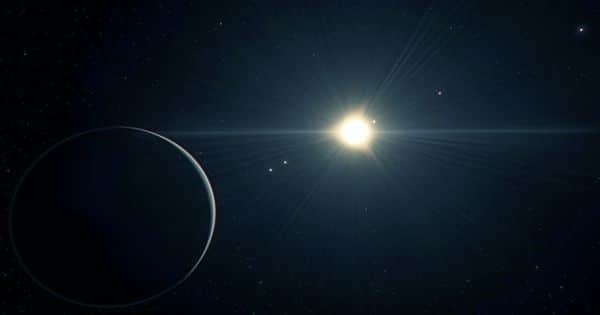Our methods for planet finding make it easier to identify planets that are larger and closer to stars than others are. As a result, most of the first planets we found were so-called “hot Jupiters”, with gas giants in orbit so close to their star that they seemed to cool the room’s oven. Still, we almost missed one of the hottest Jupiters under our noses. Vega one of the brightest and most famous stars in the night sky, was probably shaken by a planet, scientists have discovered. If it is real, it is still the second most intense planet to discovered, an unprecedented addition to our collection of extreme worlds, and a great opportunity to study such a wonderful situation.
Vega is the first star alongside the sun to take pictures. Given its fame and its relative proximity (25 light-years away), it is an obvious goal in the search for planets. Even Carl Sagan made it the source of the first extrovert signal in his introductory book. However, trying to find something there has hampered Vega as a fast spinning and possibly variable star, interfering with her efforts to track her speed. As a result, the dabs caused by the gravitational tugs of the planets are particularly difficult to detect in words, although we have found traces of a debris disk far from the stars. Some continue to try, among them Spencer Hart, a Boulder student at the University of Colorado. Hart and colleagues in the Astronomical Journal have even announced what seems to be a sign of a world moving to the edge of something.
No transiting planets were found with TSES data (NASA’s Planet-Hunting Survey), but in the spectral order the Fred Lawrence broke the 10-year data of the Whipple Observatory and saw Hurt Vega in a 2.4-day cycle. Even near a red dwarf, a planet in an orbit that would be bright hot.
Vega, however, is 40 times brighter than the Sun, so the planet’s temperature will be 2,980 º C (5,390 ºF), giving or taking some of the effects of the atmosphere. In fact, the star closest to the Sun, Proxima Centauri, is slightly warmer. Depending on the alignment of our planet’s orbit, it is possible that the planet is at least as large as Neptune is and possibly larger than Jupiter, although the authors do not think this is the end of the story of the planet Vegan.
Hurt said in a statement, “It’s a huge system, much bigger than our own solar system.” “There may be other planets throughout the system. It is just a matter of whether we can identify them.” As Sagan mentioned, any advanced life near Vega comes from somewhere else. It a young system that could evolve there that any life could barely begin and the short lifespan of the stars would prevent it from getting more.
On the other hand, the proximity of vegan planets will provide them with the benefits of studying, and what they have learned about the extreme system could have an impact elsewhere. Vega is so bright that it is visible even from the lightest polluted city; everyone outside the southernmost part of the planet thinks it is part of finding and discovering in the sky. As Hart put it, “Every time I go out and look at the night sky and see Vega, I say, ‘Hey, I know that star.’















